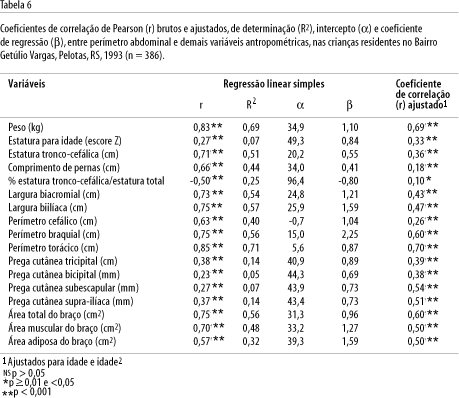The sample for this study consisted of 386 children from six to 59 months of age. The objective was to study the association between wasting and abdominal circumference. Thirteen anthropometric measurements were taken: weight, height or length, crown-rump length, 4 circumferences, 4 skin fold thicknesses, and 2 breadths. Muscle, fat, and total upper arm areas and leg length were calculated. Indices of body proportionality were obtained by dividing the anthropometric variables by height. Height-for-age, weight-for-age, and weight-for-height deficits were 25.9%, 14.4%, and 3.5%, respectively. The smallest and lightest children were those with the highest abdominal circumferences divided by height. According to this study, abdominal circumference for Brazilian children without height-for-age deficit is, on average, 1.2 cm larger than for US children. Using this as a basis, the study calculated that prevalence of weight-for-height deficit would increase from 3.5% to 7.0% by increasing 2 cm in the abdominal circumference. The low prevalence of wasting and the high prevalence of stunting as indicated by several Brazilian studies could be explained partially by larger mean abdominal circumference values.
Height Weight; Anthropometry; Nutritional Status; Nutritional Assessment







